Crime fiction hits us where we’re most vulnerable, reminding the reader of what happens out the corner of your eye, just around the corner when you’re not looking. Be it serial killers or drug cartels, it’s humanity at its most delicate and disturbing. Violence? Sure. But there’s a certain sub-genre that goes even deeper. The home invasion. There’s nothing more vulnerable than when the terror enters one’s sanctuary. When the home is transformed into an unknown, where the same rooms and spaces that used to hide you from life’s pressures suddenly become pressure cookers, anxiety-ridden moments of probable danger. There’s been a steady undercurrent of home invasion novels over the last couple decades, but even though we’ve seen a surge in film—be it You’re Next or Funny Games; Us or The Purge; Panic Room or even Knock Knock—there has been less in the world of fiction. Or so one would think. Here are some home invasion standouts from the darker side of the criminal mind. These books will make your skin crawl and make you second guess whether or not you locked that front door before bed.
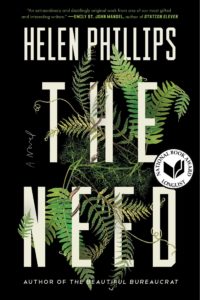
The Need by Helen Phillips
The National Book Award longlisted novel by Helen Phillips is a cerebral one, about a mother home alone with two young children when they hear someone, or something, coming from the family room. Of course, the narrative bends and buckles and shifts, becoming far more than mere home invasion; however, those moments are some of the most successful committed to the page, with countless blood curdling cliffhangers that leave you breathless.

Off-Season by Jack Ketchum
The mind of Jack Ketchum brought us disturbing and haunting novels like The Girl Next Door and Red, but his first novel, Off-Season, might be the most disturbing of them all. Based around the legend of Sawney Bean, the same one that inspired the film, The Hills Have Eyes, Ketchum’s debut novel quickly achieved controversy, with many stores and readers demanding that it be banned. It’s about a lonely cabin and a group of New Yorkers traveling to get away from the noise of the city, only to be the prey of a cannibalistic family living in the forest’s nearby caves.
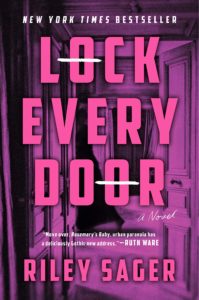
Lock Every Door by Riley Sager
Riley Sager has written a number of memorable thrillers in a few short years (Final Girls, The Last Time I Lied), but his latest is undoubtedly his best. At the center of the narrative is an apartment building and trademark New York City poverty. Jules Larsen is young and broke and happens upon an apartment-sitting gig in a building made for the elite and rich. The job comes with a few strict rules—no visitors, no nights spent away from the apartment, no interacting with other residents—but it also comes with many strings attached. Jules has no idea, same as the reader; the thriller offers unexpected domestic terror and will make you see those menacing and amazing Manhattan residential buildings in an entirely different light.
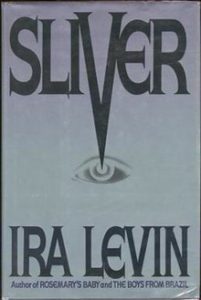
Sliver by Ira Levin
Riley Sager’s novel was inspired by this modern classic of domestic terror by the master thriller writer, Ira Levin (Stepford Wives, Rosemary’s Baby). Much like Sager’s book, Sliver involves a home invasion from “the inside out.” The scene is a New York high-rise apartment building, but instead of a house-sitter, the protagonist is a new resident moving in and meets a man that seems friendly at first but turns out to be a grade-A voyeur. Turns out the man has equipped surveillance cameras and microphones throughout the building, effectively watching and living by-proxy in the lives of the building’s tenants. Fun frightening stuff.
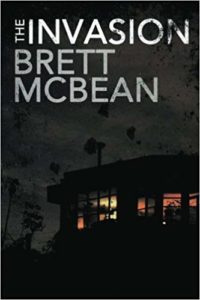
The Invasion by Brett McBean
McBean’s novel is one on this list that many might not have heard of. Published by Sinister Grin Press, McBean’s novel had a quiet release, though the narrative contained within its pages is anything but quiet. The title speaks for itself, but even so, the narrative holds its own nefarious secrets. The setting is a typical suburban house with a typical suburban family after an eventful Christmas party. But right when there should be a deep calming sleep, a group of intruders enter, armed with smartphones, apparently part of an internet cult that sounds like something out of the myths and legends of the deep web: groups of people hellbent on fear and destruction, living off the grid by hacking through it. McBean adds a different take to the home invasion, the kind of thing that could very well be an episode of Black Mirror.

The Witch Elm by Tana French
Tana French is a master of suspense and it’s highly probable you’ve read some of her other books already (In the Woods, The Secret Place). In her novel, The Witch Elm, we see the home invasion scenario dialed up to the max. There’s Toby, our protagonist who’s a bit of a charmer, a little bit of an asshole, who works at a PR firm and is celebrating with a night on the town when he arrives home to two burglars who attack him and leave him battered and near death’s door. Of course, French has so much planned for Toby, and while he survives and recovers, he faces the very thing that people fear most: themselves.
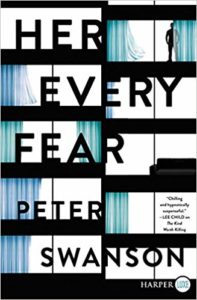
Her Every Fear by Peter Swanson
This one’s psychological thriller with a capital P. Swanson’s novel is perhaps the one novel on this list that can act as the “benchmark” for the home invasion as narrative device: it has displacement, deception, and above all the disturbing undertones that make our normal spaces so nefarious. In this case, we see one Corbin Dell helping a cousin, Kate Priddy, by swapping apartments after Kate experiences successive panic attacks after being kidnapped by a vengeful ex-boyfriend. But just as soon as Kate moves in, the next door neighbor is murdered and what commences is right out of the best that psychological horror affords—where Kate’s own sanity is questioned while at the same time, the home invasion dynamic becomes as layered as in, say, the famous Hitchcock film, Rear Window. It’s about what you do know that harms you.

The Cabin at the End of the World by Paul Tremblay
Paul Tremblay won a Bram Stoker Award for his previous novel, A Head Full of Ghosts, and in The Cabin at the End of the World, he flexes his literary chops with a perfectly intoned horror experience. The book begins with the sort of delectably and spine chilling opening scene that any great home invasion film would do well from mimicking: Wen, a smart young girl, is playing in the front yard when a stranger, tall and enigmatic, looms over her asking if her parents are home. He says his name is Leonard and after a brief conversation, he delivers a knockout line, “None of what’s going to happen is your fault.” Of course, more people arrive and things get dicey and completely out of any realm the astute reader would predict. But it’s Tremblay at his best, and he uses the home invasion flawlessly.

The Siege of Trencher’s Farm by Gordon Williams
The Peckinpah classic, Straw Dogs, was, in fact, an adaptation of a novel by Gordon Williams. But it might come as some surprise to find that Williams’ novel lacks many of the most brutal scenes in Peckinpah’s treatment. The adaptation has its own well-documented history, but the morality tale delivered in The Siege of Trencher’s Farm remains intact and worthy of turning the pages. George is an astute intellectual that prides himself on being rational; however, when his family and safety is encroached upon by ruthless criminals, he must come face-to-face with survival and its barbaric, almost animalistic tendencies. It’s a moral quandary as essential to horror fiction as it is to the basic understanding human survival.
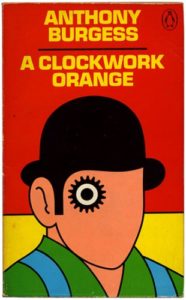
A Clockwork Orange by Anthony Burgess
This one is on here for two reasons: 1) the Burgess classic is continuously underrated and on the verge of being forgotten in modern times and 2) there is, indeed, a horrific home invasion that Alex and his droogs invade a woman’s home where they exhibit the “ultraviolence” Alex so famously proclaims. It’s a sequence that is about as unsettling as anything can be, and it’s equally alarming to see how lackadaisical Burgess treated the novella, seeing it as nothing more than a paycheck, and not even a large one at that. The irony of it becoming one of his most memorable works, well that might be an entirely different invasion of one’s “home,” something worth exploring in a different list.

















